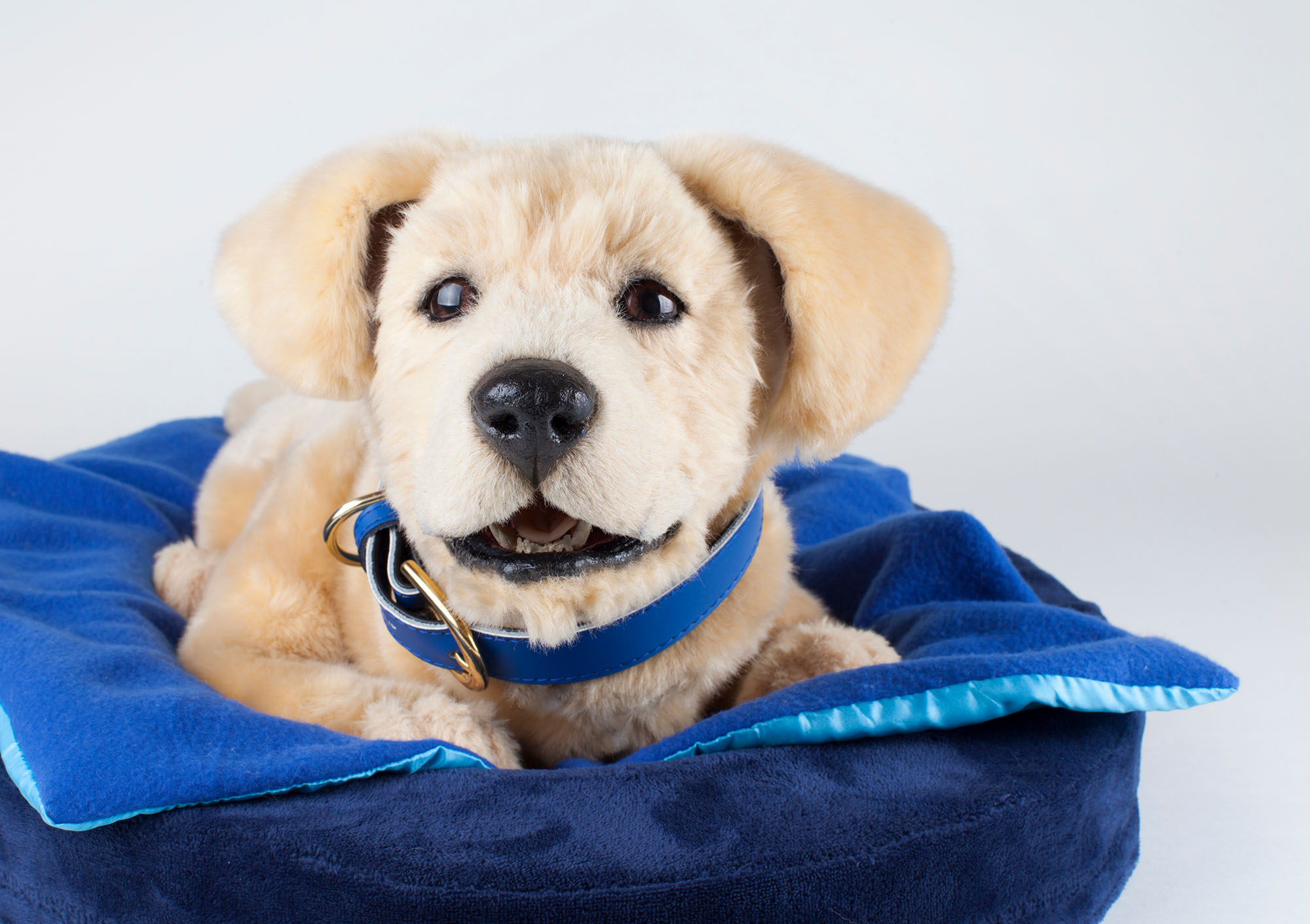Robotic emotional-support animals for people facing health adversities

Tombot makes robotic animals that transform the daily lives of individuals, families and communities facing serious health adversities. Tombot’s first product to market is “Jennie:” a robot designed specifically for seniors with dementia, modeled after an 8-10 week old Labrador retriever puppy. Inspired by the mother of Tombot’s CEO and Co-founder Tom Stevens, Tom had to re-home his mother’s dog after she was diagnosed with Alzheimer’s dementia.
Robotic animals can effectively mimic the health benefits of live animal companions for seniors with dementia, without the associated burden of care, expense, or potential safety issues. Peer-reviewed studies show robotic animals can reduce the behavioral and psychological symptoms of dementia, and reduce the need for dangerous psychotropic medications. Tombot aims to be the first robotic animals to be both FDA medical devices and remote safety and health monitoring platforms.
Tombot teamed with Jim Henson’s Creature Shop to create “Jennie,” a handcrafted prototype to support customer studies. While Jennie accomplished Tombot’s goals for its customer studies in spectacular fashion, she was fragile, unreliable, and expensive. Tombot engaged Synapse to redesign Jennie from the ground up to meet the Tombot customers’ very high expectations for a realistic robotic emotional support animal. The product of these efforts is Alpha I Jennie – internally nicknamed “Clifford.”
The initial step was to assess the gaps between the Jennie prototype and Tombot’s 1st draft product requirements document. These gaps included how to make the neck and other mechanical subsystems capable of surviving rigorous use without sacrificing the realism exhibited in Jennie. Another serious gap was identified in Jennie’s audio subsystem. Jennie’s existing voice command system had limited functionality and was unreliable, with voice commands frequently going unnoticed.


Within the first few months of the engagement, Synapse created major improvements with Clifford’s mechanical subsystems:
- Neck: Synapse engineers strengthened the entire neck mechanism to make it more durable, but the key improvement was increasing the puppy’s range of motion. As a result, Clifford has the ability to lay his head flat on the floor between his paws, exhibiting a common puppy sleeping position.
- Tail: Through a novel cam-based design, the tail mechanism was improved so it could be tucked under the body while sleeping. The tail also received other upgrades that included getting an arc shape (compared to straight) when wagging and increased side-to-side wag motion to resemble a real dog.
- Eyebrows: Eyebrows and eyebrow motion were added because of Tombot’s research showing that “puppy dog eyes” are a key trait for the formation of emotional attachment. Just below the eyebrows are the eyelids, whose mechanism was changed to prevent damage from user misuse.
- Ears: A little further back on the head are the ears with an updated profile that improved safety and provided more lift and back-to-front moveability.
- Mouth: The mouth’s drive mechanism was modified as a safety measure to prevent injuries due to an accidental bite.
- Head: The head support structure was redesigned for independent control of pitch, roll, and yaw.
As important as the movements are, it is equally important that the puppy’s sensory system responds realistically. Synapse engineers built a state-of-the-art audio processing system and incorporated behavioral context recognition as part of Clifford’s design process. Using a beamforming microphone array with a Synapse-optimized audio front end, Clifford can determine from which direction he is being called, then respond by turning his head to his owner or any source of sound, and exhibit context-appropriate behaviors including making authentic puppy sounds. The redesigned systems allow Clifford to respond to over 20 different voice commands. Owners can customize their puppy’s behaviors including renaming the puppy through an accompanying smartphone app.
“Any innovative hardware idea is going to carry a large amount of technology risk. Without a partnership with experts like Synapse, the likelihood of failure is much higher.”
Tombot CEO and Co-founder Tom Stevens

The combination of Synapse mechanical, electrical, and firmware engineering has produced a high performing technology system that enables Tombot to bring to market a lifelike and transformative user experience.
To ease Clifford’s transition to commercialization, Synapse factored in cost and manufacturability for all of the improvements. Engineers designed the mechanisms that enabled all of Clifford’s motions with the fewest possible motors. The number of computer platforms was reduced and the electrical architecture was transitioned to production-appropriate chipsets. Tombot is on path to be the world’s first affordable, FDA-regulated, medical-grade robotic animal, and begin shipping to its many thousands of pre-order and waitlist customers from around the world.
At Synapse, we believe in the power of innovation to improve human lives. We are proud to bring Tombot’s vision to life and the positive impact it will have on people.